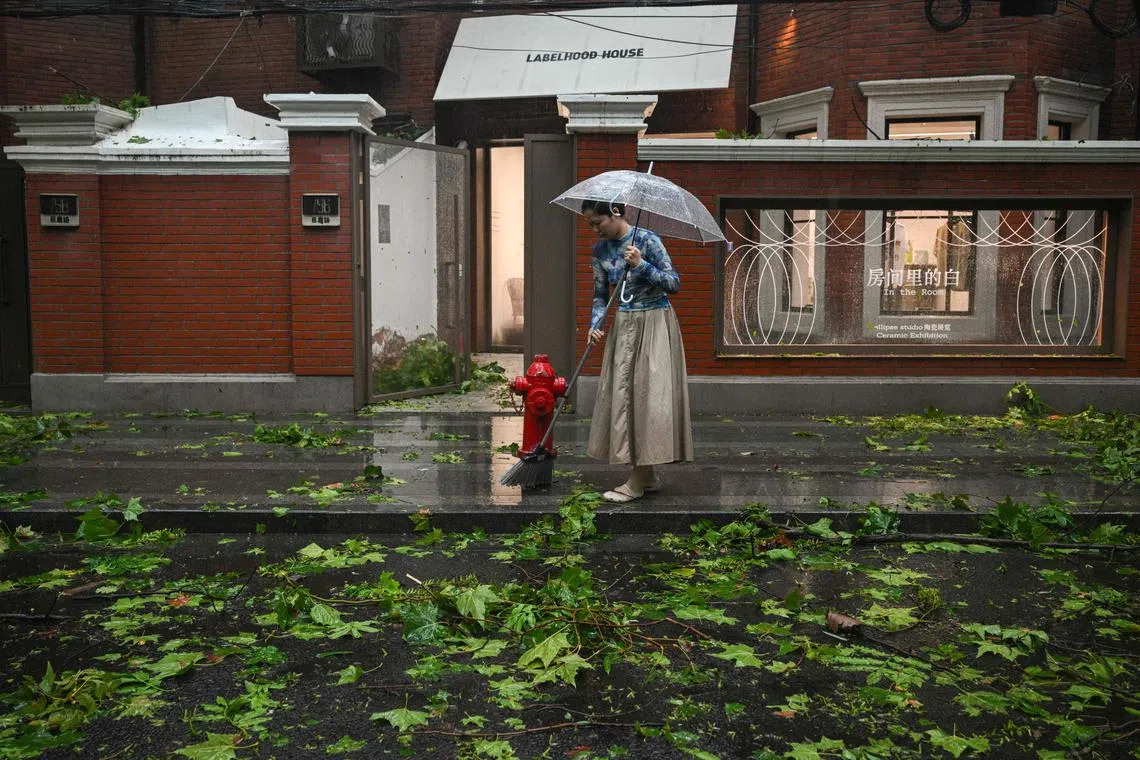Shanghai hit by second typhoon days after historic storm
Sign up now: Get insights on Asia's fast-moving developments

Parts of Shanghai upgraded their typhoon alert levels as the storm approached the city on Sept 19.
PHOTO: AFP
Follow topic:
SHANGHAI - Roads and neighbourhoods in Shanghai flooded on Sept 20 as the Chinese megacity was battered by a second typhoon in a week, with rainfall breaking local records in parts of the city.
Typhoon Pulasan came days after the strongest storm to hit Shanghai since 1949, Typhoon Bebinca, caused extensive damage
Pulasan made landfall on the night of Sept 19 with a maximum wind speed of 83kmh, according to state-run Xinhua news agency.
The city evacuated 112,000 people, Xinhua said, and some ferry and train services were suspended.
Videos posted on social media on Sept 20 showed Shanghai residents wading through calf-level water in some neighbourhoods, though no severe damage or casualties have been reported so far.
Two weather stations recorded more than 300mm of rainfall within six hours, the highest in their districts since records began, Xinhua said.
A video published by state-owned Shanghai Media Group showed police officers in high-visibility coats pushing a stalled car through water in Shanghai, while a scooter driver in a poncho attempted to cross a flooded intersection.
Around a dozen cars had broken down in that area due to the water, according to the video.
Many of the areas that were flooded earlier in the morning were dry and cleaned up by around 11am on Sept 20, an AFP reporter saw.
Parts of Shanghai upgraded their typhoon alert levels as the storm approached the city on Sept 19.
The storm “is forecast to gradually weaken as it moves inland”, Xinhua said, though downpours continued in the city on the morning of Sept 20.
On Sept 16, Bebinca felled more than 1,800 trees and left 30,000 households without electricity, with the authorities evacuating more than 400,000 people across Shanghai ahead of the storm.
Scientists say climate change, driven by greenhouse gas emissions, is making extreme weather more frequent and intense.
China is the world’s biggest emitter of greenhouse gases, though its per capita emissions pale in comparison to rival economic power the US. AFP

